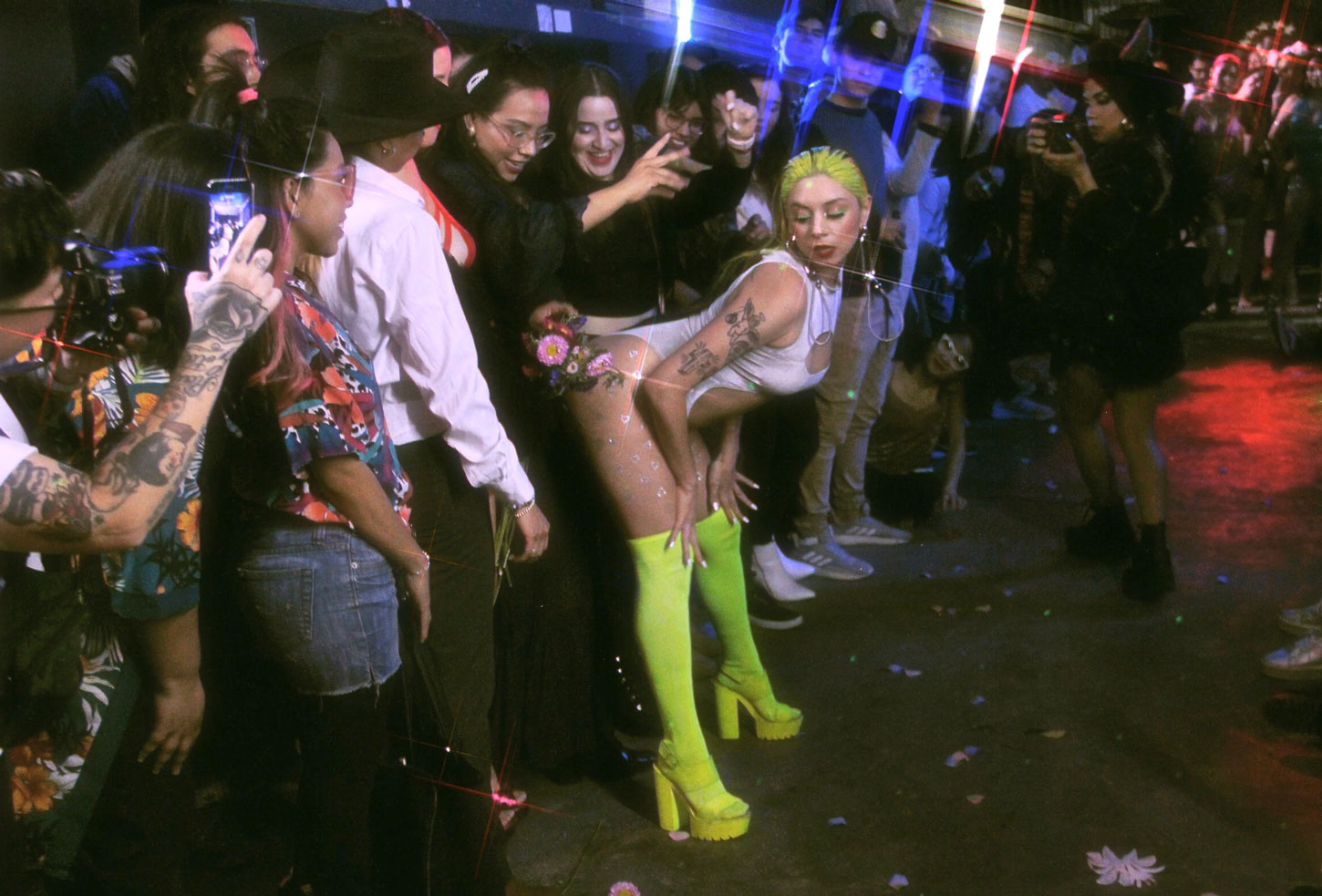Marlon T. Riggs, Tongues Untied (Signifyin’ Works, 1989), 55 min. Shot in August 1988, the street voguing scene described above features Eddy Diva, Alexis Infiniti, Willi Ninja, Sean Omni, and Derrick Xtravaganza, among other unidentified ball kids. The excerpt is available on YouTube →.
For an account of 1920–30s emerging drag ball culture in Harlem, see Eric Garber, “A Spectacle in Color: The Lesbian and Gay Subculture of Jazz Age Harlem,” in Hidden From History: Reclaiming the Gay and Lesbian Past, ed. Martin Duberman (Penguin Books, 1989), 318–28.
Essex Hemphill, “In the Life,” in Ceremonies: Prose and Poetry (Plume, 1992), 172–73.
Archie Burnett speaking to students during a workshop at CA2M, Madrid, 2018. Quoted in Elements of Vogue: A Case Study in Radical Performance, eds. Sabel Gavaldon and Manuel Segade (CA2M/Motto, 2020), 310.
John Tagg, “A Means of Surveillance,” in The Burden of Representation: Essays on Photographies and Histories (Palgrave Macmillan, 1988), 66–102.
Félix Regnault (1863–1938), quoted in Fatimah Tobing Rony, The Third Eye: Race, Cinema, and Ethnographic Spectacle (Duke University Press, 1996), 46.
Rony, The Third Eye, 21–73. See also Linda Williams, “Film Body: An Implantation of Perversions,” Cine-tracts, no. 4 (1981): 19–35.
Dick Hebdige, “Posing Threats, Striking Poses: Youth, Surveillance, and Display,” SubStance, no. 37–38 (1983): 68–88. See also Hebdige, Subculture: The Meaning of Style (Routledge, 1979).
Riggs, Tongues Untied.
José Esteban Muñoz, Disidentifications: Queers of Color and the Performance of Politics (University of Minnesota Press, 1999), 1–34.
For an auto-ethnographic analysis of male privilege in the ballroom community, see Marlon M. Bailey, Butch Queens Up in Pumps: Gender, Performance, and Ballroom Culture in Detroit (University of Michigan Press, 2013), 43–55.
Mary Louise Pratt introduced the notion of “contact zone” in Imperial Eyes: Travel Writing and Transculturation (Routledge, 1992).
Kobena Mercer, “Dark and Lovely Too: Black Gay Men in Independent Film,” in Queer Looks, ed. Martha Gever, Pratibha Parmar, and John Greyson (Routledge, 1993), 238–55.
Noelle Deleon (@noellearchives), “The History of Femme Performance: A Thread,” Twitter, March 23, 2020 →.
Georges Didi-Huberman, Invention of Hysteria: Charcot and the Photographic Iconography of the Salpêtrière (MIT Press, 2003).
Anne Martine Whitehead, “Expressing Life Through Loss: On Queens That Fall with a Freak Technique,” in Queer Dance: Meanings & Makings, ed. Clare Croft (Oxford University Press, 2017), 281–89.
Henry Louis Gates, Jr., The Signifying Monkey: A Theory of African-American Literary Criticism (Oxford University Press, 1988).
Riggs, “Black Macho Revisited: Reflections of a Snap! Queen,” in Brother to Brother: New Writings by Black Gay Men, ed. Essex Hemphill (Redbone Press, 1991), 324.
I’m borrowing the term “Miramaxed” from Jonathan Rosenbaum, Movies as Politics (University of California Press, 1997), 184.
Marlon M. Bailey, “‘They Want Us Sick’: Ballroom Culture and the Politics of HIV/AIDS,” chap. 5 in Butch Queens Up in Pumps, 182–220.
This reading of the Mexican drag term hechizo is based on conversations with Issa Téllez (aka Escorpiona 007) and Victoria Letal, founding mother of the House of Apocalipstick, during the balls at the Museo Universitario del Chopo, Mexico City, organized within the exhibition “Elements of Vogue.”
Essex Hemphill, “To Be Real,” in Ceremonies: Prose and Poetry (Plume, 1992), 120–21.
For an account of gender performance and queer parody as signifying practices (rather than as an expression of a given identity), see Moe Meyer, “Reclaiming the Discourse of Camp,” introduction to The Poetics and Politics of Camp (Routledge, 1994), 1–19. See also Paul B. Preciado, “The Ocaña We Deserve: Campceptualism, Subordination, and Performative Politics,” in Ocaña, ed. Pedro G. Romero (Ediciones Polígrafa, 2012), 412–38.
Franka’s chant is recorded in this ballroom beat produced in collaboration with NAAFI, a DJ crew and record label based in Mexico City →.
An earlier and shorter version of this article appeared in the magazine Revista de la Universidad de México (March 2021). The ideas in the essay are informed by an ongoing dialogue with Manuel Segade, cocurator of the exhibition “Elements of Vogue: A Case Study in Radical Performance,” first presented at CA2M, Madrid (2017–2018), then at the Museo Universitario del Chopo, Mexico City (2019–2020). I am indebted to the voguers and ballroom activists who shared their situated knowledge throughout this process, including Mother Amazon Leiomy, Archie Burnett, Escorpiona 007, Benji Hart, Galaxia LaPerla, Victoria Letal, Javier Ninja, Lasseindra Ninja, Franka Polari, Twiggy Pucci Garçon, Michael Roberson Garçon, and others.
